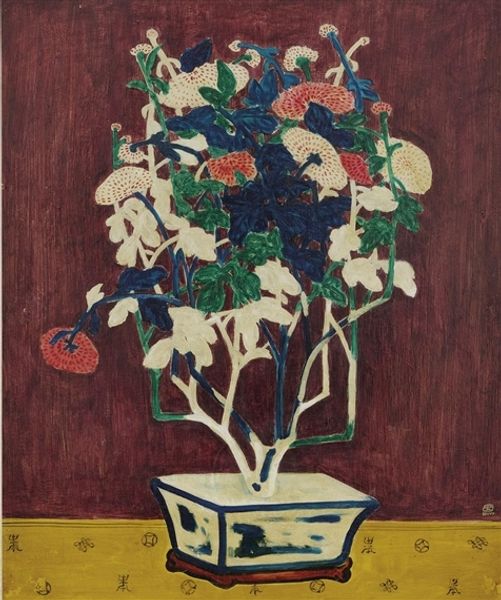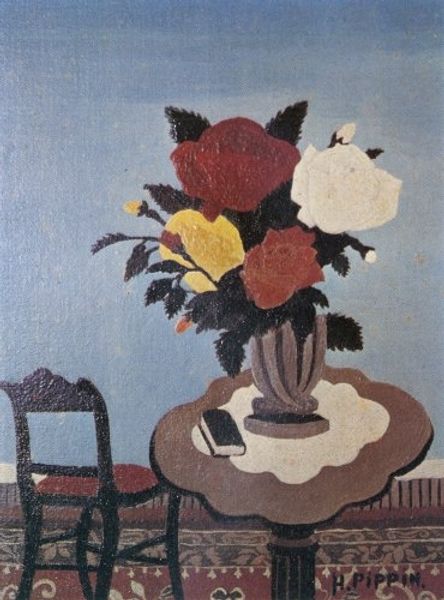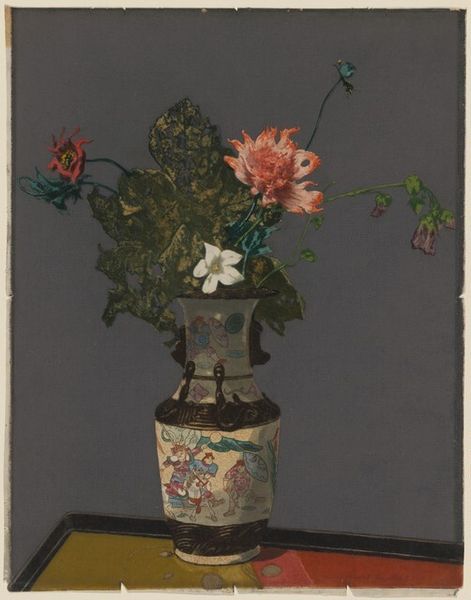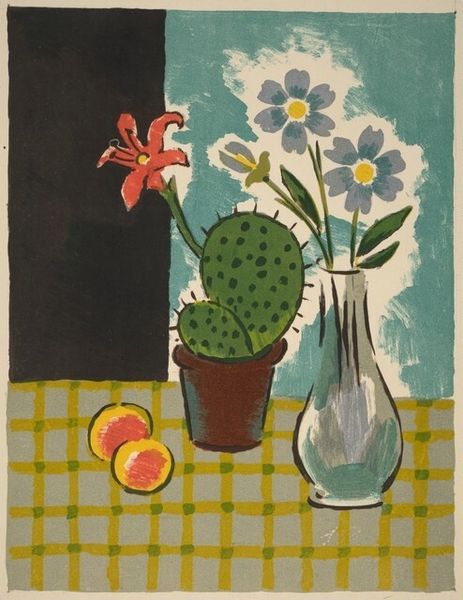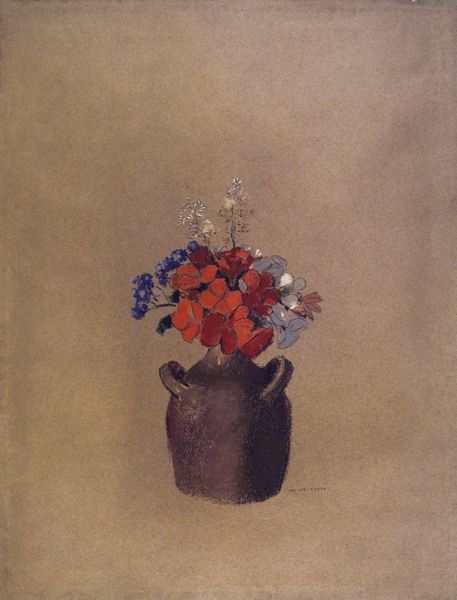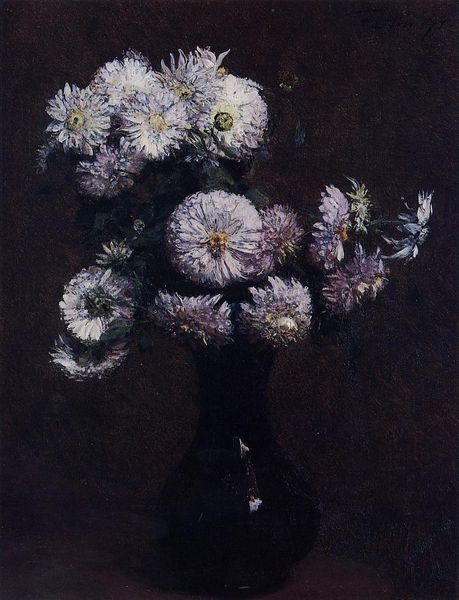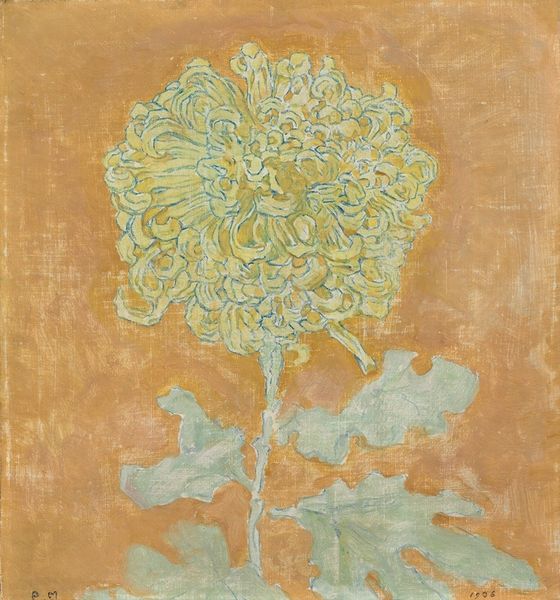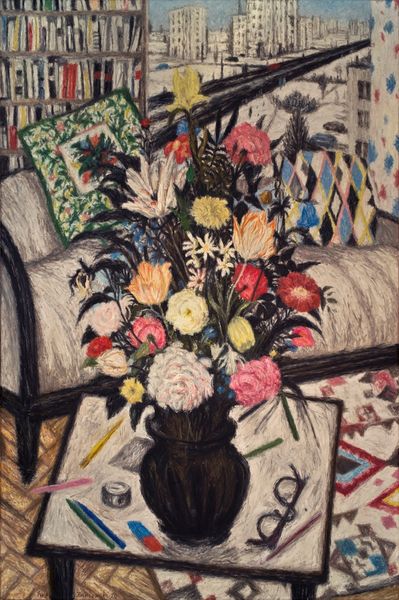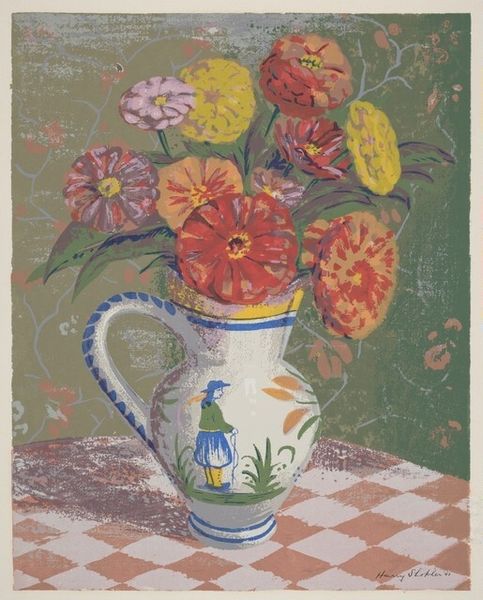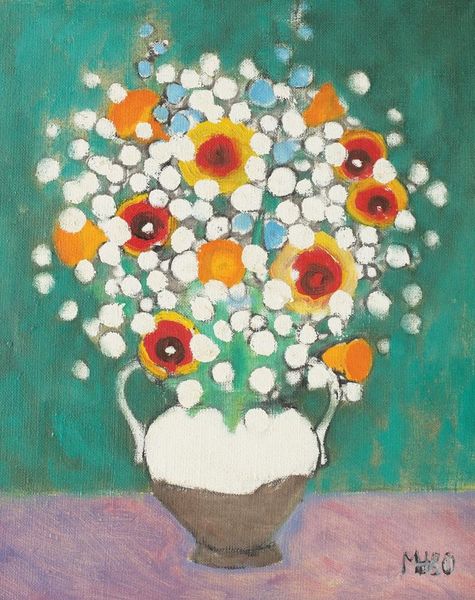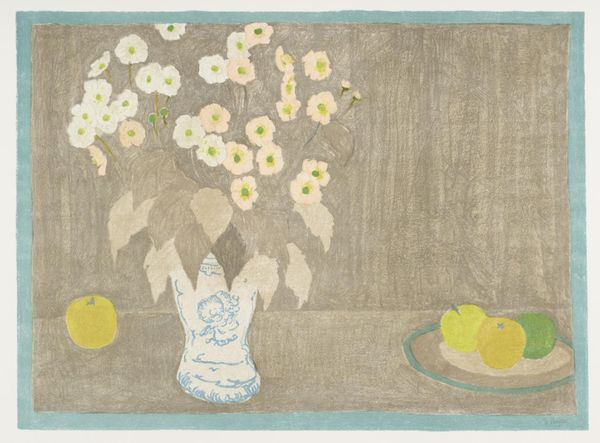
painting, oil-paint
#
narrative-art
#
painting
#
oil-paint
#
ceramic
#
modernism
Copyright: Public Domain: Artvee
Curator: Good morning. Today we are observing "Table and Two Chairs," an oil painting rendered in 1946 by Horace Pippin. What's your initial read? Editor: Stark. It's immediately striking how austere it is, this near-monochrome palette against the canvas's raw texture. There's a compelling emptiness, a sort of melancholic stillness. Curator: Precisely. Notice how Pippin’s limited color range—almost entirely shades of grey, black and neutral beiges—works to emphasize the composition. The stark contrast between the solid, flattened forms and the raw canvas heightens the planar qualities of the painting. Editor: I agree; it’s interesting how that textural tension interacts with the depicted scene. You get the impression of hand-hewn or readily available materials—a commonplace ceramic vase perhaps, painted in unassuming matte colors? One senses the weight of the object in its pure utility. Curator: Definitely. And how those near-silhouette chairs bookend the composition, each holding equal visual weight. There is also the flat perspective, further abstracting our spatial perception, pulling our eye towards formal simplicity. It has the appearance of naïve or self-taught art, yet it carries a profound visual sophistication. Editor: I think the rough finish on the chairs even echoes what feels like a kind of industrial mass production or rural craftsmanship. Pippin seems quite attuned to this idea of the handmade versus something manufactured more broadly and rapidly available. It really speaks to art production during a time of post-war availability and industrial growth. Curator: An astute observation! He masterfully captures these elements within a distilled tableau. He offers a modernist interpretation that challenges our expectations of form, space, and even subject matter in this still life tradition. Editor: This piece speaks quietly, in muted tones and forms, of the convergence of everyday life and the art within it, crafted as something useful and aesthetically potent at once. Curator: Absolutely. It reminds us to look past conventional techniques, toward the inherent dignity in simplistic representations.
Comments
No comments
Be the first to comment and join the conversation on the ultimate creative platform.
